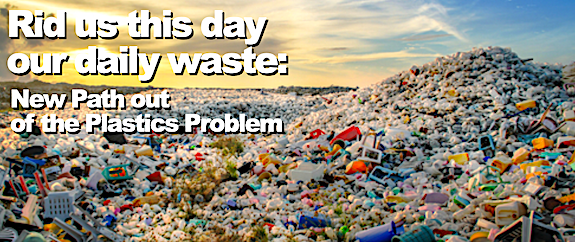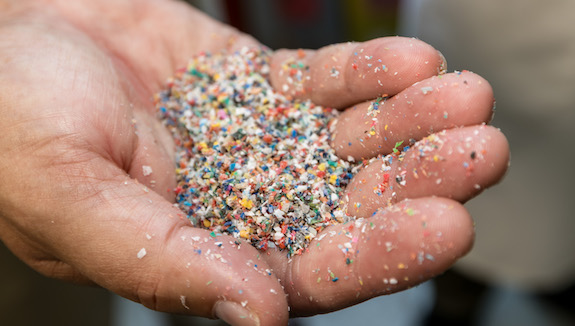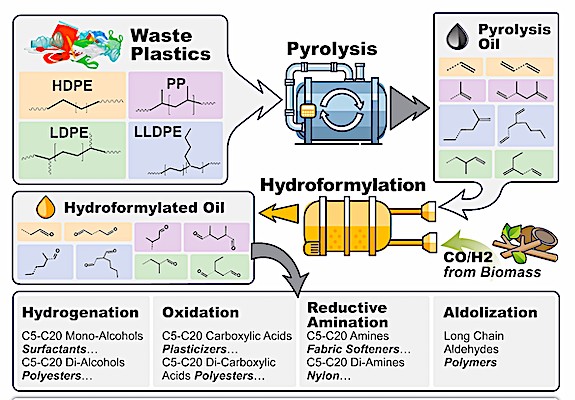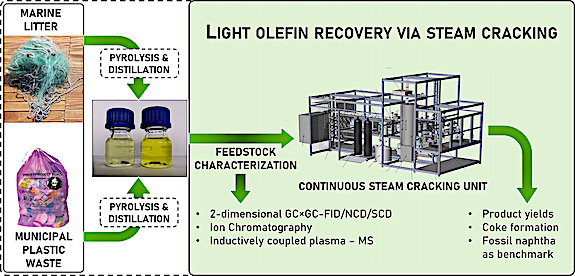Rid us this Day our Daily Waste: New Path out of the Plastics Problem

Here is my Astronomy of Plastics, since you didn’t ask.
Doomsayers about the shortcomings of plastics, they are like comets in the Kuiper Belt, too numerous to count, full of Hollywood disaster movie scenarios, ultimately and usually way off base.
Proposers of solutions for the problems of plastics, those are more like the planets, fewer in number, often more gas than rock, signs of intelligent life are reported but can be a mirage, worth exploratory trips because, well, you never know.
Actual new ideas that solve problems in plastics — much more rare, these are the supernovae, seeding the universe with new and transformative stuff. Not always welcomed by neighbors and colleagues, and boy do you need the right catalyst.
The Plastics Problem
Why are practical new ideas for plastics so hard? The main reason is that the products made by existing processes are so low in value that, instead of making treasure from trash, we make trash from trash, and there’s no cash. The fact that the waste stream is so filled with different types of plastics and they don’t play well together, that doesn’t help.

So, we need a big and new approach, it’s not the hour for the Hail Mary football play, but it is the right hour for a strong and accurate arm to throw the deep one.
For Help, Go West from Milwaukee
Good news, a supernova arrived in my inbox the other day, courtesy of an article in Science authored out of the fertile star nursery of the Huber Lab at the University of Wisconsin.

With a new technique, however, University of Wisconsin-Madison chemical engineers can turn waste plastic into high-value chemicals. The method relies on two chemical processes—pyrolysis and hydroformylation—which ultimately increase the economic incentives for plastic recycling and open the door to recycling new types of plastic.
Now, there’s nothing actually brand-spanking new in the idea of using pyrolysis to process waste plastic. Anellotech is usuijng such an approach. Licella, another thermochemical approach (non-pyrolytic) is also chasing valuable products via the plastic waste stream.
Possibilities in that pyro oil
Turns out, there’s more opportunity in pyrolysis oils than we thought. Pyrolysis oil contains large amounts of olefins, the central building blocks of polyesters, surfactants, alcohols and carboxylic acids.
The Huber Lab has employed homgenous hydroformylation catalysis to convert lefins into aldehydes, which can then be further reduced into important industrial alcohols.
Now, hydroformylation is not new. As Wikipedia opines, “the development of hydroformylation is one of the premier achievements of 20th-century industrial chemistry.” There’s the BASF-oxo process, the Exxon process, the Shell process, Union Carbide process, RCRPP all using cobalt catalysts and start with the higher olefins found in petroleum streams under high pressure and moderate temperatures. Applying this to waste plastics, however — never heard of that.
The Big Payoff
The uplift? Consider making high-value alcohols worth $1,200 to $6,000 per ton from waste plastics, which are only worth about $100 per ton. And, consider that at least 10 chemical companies have built or announced plans for facilities to produce pyrolysis oils from waste plastics. And, that, in the main, they are going to feed those oils to steam crackers to produce lower-value compounds
Many of them run the pyrolysis oil through steam crackers to produce low-value compounds. More on the state of that art here — but definitely, think light olefins, as in this recent article on optimizing the conventional opportunities.

Next steps
The next step for the team is to tune the process and better understand what recycled plastics and catalyst combinations produce which final chemical products
It Took a Village
The research team The researchers, led by George W. Huber, a professor of chemical and biological engineering at UW-Madison and director of the Department of Energy-funded Center for the Chemical Upcycling of Waste Plastics, postdoctoral researcher Dr. Houqian Li and PhD student Jiayang Wu, described their methods in the August 11, 2023 issue of the journal Science.
They had a lot of helpers. Clark R. Landis, chair of the Department of Chemistry and a world expert on hydroformylation, suggested the possibility of applying the technique to pyrolysis oils. Chemical and Biological Engineering Professor Manos Mavarikakis used density functional theory to provide molecular-level insight into how the chemical bonds break. And Chemical and Biological Engineering Professor Victor Zavala provided help analyzing the economics of the technique and the life cycle of the plastic waste.
Reaction from the stakeholders
“These products can be used to make a wide range of materials that are higher-value,” says Huber. “You can make surfactants from them that are used to make soaps and cleaners. You could make other polymers from them that are of higher value than the original polyolefins. So, we’re really excited about the implications of this technology. It’s a platform technology to upgrade plastic waste using hydroformylation chemistry.”
“Currently, companies don’t have a really good approach to upgrade the pyrolysis oil, said Li. “In addition, this process uses existing technology and techniques. It’s relatively easy to scale up.”
Category: Top Stories















